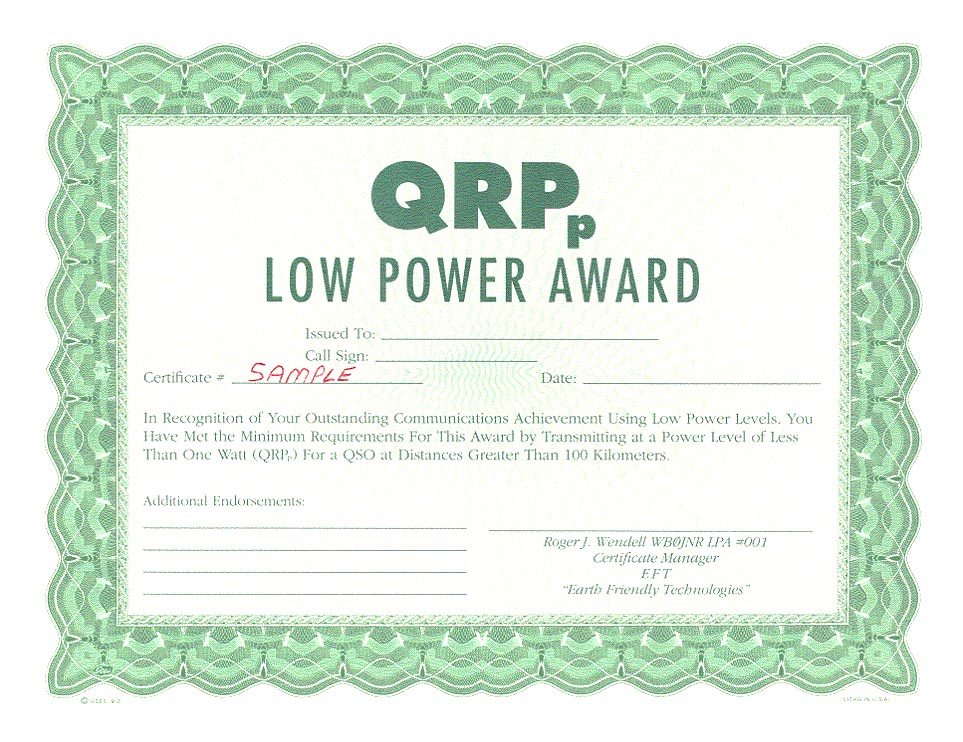
Found at Southern California DX Club web site http://wa6bob.com/default.aspx

Rules and Application Process:
(I'm still offering the QRPp award, on a very nice looking certificate,
and hope that you'll not only apply for the award but that you'll make
QRPp operating a regular part of your amateur radio activities!!)
1. The applicant's transmitter output power, during the period of qualifying communications, was accurately measured to be less than one watt (QRPp).
2. The distance between the applicant's transmitting antenna and the reciving station was over 63.3 miles (100 kilometers).
3. No artificial means of active relay was used to complete the communications (i.e., repeaters, satellite transponders, digi-peaters, land-lines, etc.).
4. Send a signed statement to the certificate manager (me!) affirming that the transmitter power was less than one watt, the distance was greater than 100 kilometers, and no artificial means of active relay was utilized. Provide the certificate manager with a photocopy of the station log, or photocopy of the confirmation QSL card (Electronic QSL cards are not acceptable), clearly showing the date, time, mode, and frequency on which the qualifying communication took place. If desired, provide the certificate manager with information concerning any endosements (such as longer distances, even lower power levels, WAC, WAS, WAZ, solar power, etc.) that you may want listed on your certificate.
5. Mail $4.00 USD ($5.00 USD for foreign), to cover the three P's (postage, paper, and printing) along with the aforementioned application materials to Roger Wendell at this address:
Roger J. Wendell - WBØJNR
QRPp Certificate Manager
P.O. Box 17174
Golden, CO 80402-6019 USA
 Propfire is a web browser extension that allows users to view HF propagation conditions on their web browser status bar. Ham Radio operators and other shortwave radio enthusiasts will be able to monitor propagation conditions using this Firefox extension. This data is retrieved from the NOAA website and is periodically updated in your browser as you surf the web. (assuming you are using Firefox).
Propfire is a web browser extension that allows users to view HF propagation conditions on their web browser status bar. Ham Radio operators and other shortwave radio enthusiasts will be able to monitor propagation conditions using this Firefox extension. This data is retrieved from the NOAA website and is periodically updated in your browser as you surf the web. (assuming you are using Firefox).

 |
This RingSurf Amateur Radio Net Ring owned by Parma Radio Club Online. [Previous |Skip Next | Next 5 | Random | List Sites] |
 |